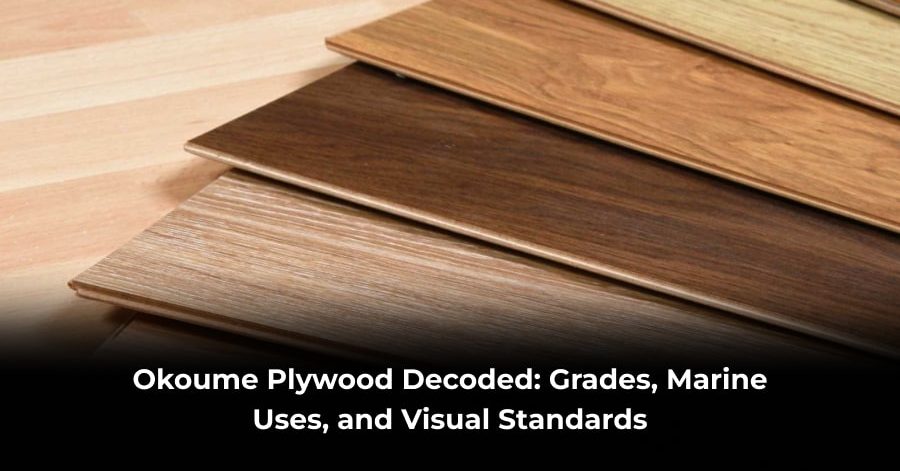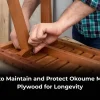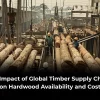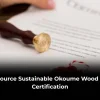Introduction
Choosing the right plywood can be challenging if you don’t fully understand the grading systems, material performance, or the differences between types of plywood. Among the various plywood options available today, okoume plywood stands out for its durability, lightweight nature, and smooth finish. Often used in high-end cabinetry, interior applications, and boat construction, okoume marine plywood offers water-resistant performance and a fine appearance.
In this comprehensive guide, we’ll decode how to identify quality okoume plywood using wood grade images, how grading works, and why okoume marine plywood is the go-to choice for projects demanding elegance and resilience.
What is Okoume Plywood?
Okoume plywood is crafted from the wood of the Aucoumea klaineana tree, native to Central Africa. This tropical hardwood is known for its light reddish-brown hue, fine grain, and low density. Because of its unique balance of strength and workability, okoume is a preferred material for applications where weight and appearance matter.
Characteristics of Okoume Plywood:
- Lightweight and easy to handle
- Smooth surface for painting or staining
- Consistent grain with minimal knots
- Suitable for interior and marine use (when graded appropriately)
Available in various thicknesses and grades, okoume plywood can be adapted for both structural and decorative projects.
What is Okoume Marine Plywood?
Okoume marine plywood is a specialized version of standard okoume plywood that is treated and constructed to withstand moisture and outdoor conditions. It’s made using waterproof glue and higher-grade veneers, which makes it ideal for marine and exterior uses.
Key Features:
- BS 1088 compliance (or equivalent marine-grade standards)
- Waterproof bonding using phenolic or WBP adhesive
- Low void core and uniform veneer layering
- Resistance to fungal attacks and moisture absorption
This makes okoume marine plywood ideal for boat hulls, wet-area cabinetry, decking, and marine interiors.
Understanding Wood Grades for Okoume Plywood
Wood grades help identify the quality and intended application of plywood. Both okoume plywood and okoume marine plywood are graded based on surface defects, veneer quality, and bonding strength.
Common Face Grades:
- A Grade: Virtually flawless with a smooth surface; best for staining or visible applications.
- B Grade: Minor defects; can be used for surfaces that may be painted.
- C Grade: Visible knots and repairs; more suitable for hidden structural use.
- D Grade: Significant flaws; generally used in utility applications.
The back face is typically a lower grade (e.g., A/B or B/C).
How Wood Grade Images Help Identify Quality
Visual grading is an essential aspect of selecting plywood. While technical specs provide numerical assurance, wood grade images give a clearer picture of what you’re buying—literally.
Why Wood Grade Images Matter:
- Help compare surface texture and finish quality
- Visualize knots, patching, and imperfections
- Useful for ordering online or sourcing from international suppliers
- Allow better communication with vendors about expectations
By studying wood grade images, buyers can distinguish between premium and low-grade okoume plywood, especially when working with okoume marine plywood, which demands precision and high standards.
How to Read and Use Wood Grade Images
Whether you’re sourcing plywood locally or online, being able to interpret wood grade images will help you select the right material.
What to Look For:
- Knot Size and Frequency: Fewer and smaller knots = higher grade
- Grain Direction and Consistency: Straight, even grains indicate good craftsmanship
- Surface Smoothness: A sanded, unblemished surface is a sign of top-quality okoume plywood
- Color Uniformity: Look for consistent color tones in the veneer
Pro tip: Always request multiple wood grade images from your supplier when ordering large quantities to avoid inconsistencies in the batch.
Okoume Plywood vs. Other Plywood Types
| Feature | Okoume Plywood | Standard Plywood |
| Weight | Very Lightweight | Moderate to Heavy |
| Grain Finish | Smooth and Attractive | Variable |
| Moisture Resistance | Moderate to High (Marine) | Low to Moderate |
| Machinability | Excellent | Average to Good |
| Common Use | Cabinetry, Boats, Interiors | Furniture, Construction |
When used in structural applications with the correct grade, okoume marine plywood can outperform many other marine-grade plywood options due to its balance of strength, aesthetics, and weight.
Where Okoume Marine Plywood Works Best
1. Boat Building
This is where okoume marine plywood truly shines. Its lightweight nature and water-resistant construction make it ideal for boat hulls, decks, and cabinetry.
2. Bathroom and Kitchen Cabinets
The ability to resist swelling and moisture damage makes marine-grade okoume plywood a smart choice in wet areas.
3. Outdoor Furniture
Treated okoume plywood maintains its shape and finish in changing weather conditions when properly sealed.
4. Architectural Interiors
With its fine grain and smooth texture, it’s often chosen for decorative wall panels and high-end joinery.
Selecting the Right Supplier for Okoume Plywood
When purchasing okoume plywood or okoume marine plywood, your choice of supplier is just as important as the grade you select. Consider these factors:
- Certifications: Ensure marine plywood meets BS 1088 or equivalent standards
- Consistent Inventory: Reputable suppliers offer bulk availability and consistency
- Clear Grading: Look for suppliers who provide detailed specifications and wood grade images
- Support and Custom Sizing: Some suppliers offer cutting, sanding, and finishing services for added convenience
Also, prioritize vendors who can walk you through the grading system and help match plywood to your project’s specific needs.
Red Flags to Watch For
- No grading info on listings
- Limited or low-quality product images
- Vague origin of timber source
- No return policy for damaged sheets
These are signs that the supplier may not provide premium okoume marine plywood, and your order may not meet expected standards.
Conclusion
Navigating the plywood market becomes easier when you understand grades, visual standards, and product performance. Whether you’re building boats, crafting cabinets, or designing outdoor structures, okoume plywood is a reliable and attractive material choice.
Remember, investing in marine-grade panels is not just about moisture resistance—it’s about longevity, safety, and appearance. By using wood grade images and sourcing verified okoume marine plywood, you ensure that your project starts with the best foundation.
Choose quality. Choose confidence. Choose okoume plywood.






